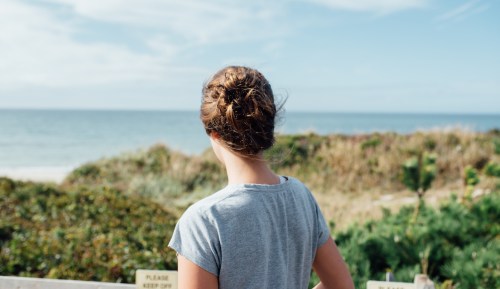There are plenty of excuses to escape to Miami in December so you can check out Art Basel: The sun, the soirees, and, of course, the inspiring art you won’t be able to view anywhere else.
But there’s a new reason that’s sure to take the top spot on that list: For the first time ever, Well+Good is going to Art Basel—and you can join us!
You’ll find us at the American Express Platinum House at the EDITION Miami Beach hotel, where American Express Platinum Card® and Centurion® Members can exclusively take advantage of some serious perks (as in, #bestweekendever level).
The impressive lineup includes a Hannah Bronfman DJ set, nail art by Paintbox, a hair styling station by Ouai Hair, aura photographs by Radiant Human, and enough food and bev to keep you fueled all four days.
And since a well-rounded weekend requires some opportunities to work up a sweat, Well+Good is setting up shop at Platinum House each morning with buzzy workouts led by Miami’s top fitness pros. The best part? All proceeds from your $15 ticket price go towards The Miami Foundation’s hurricane relief efforts. So start researching flights ASAP.
Keep reading to meet the in-demand instructors who we’re tapping for our Art Basel Miami workout series.
Start your morning with boxing queen Christa DiPaolo
Equinox fans will recognize DiPaolo as the co-creator of The Cut, the in-demand class offered at locations across the country. The 45-minute session allows you to reap the benefits of boxing without having to deal with a heavy bag or cumbersome gloves—and she’ll tap the same techniques for her Platinum House debut. Think of it as half badass jabs, half upbeat cardio.
When:Friday December 8, Saturday December 9 at 8:30 a.m.
Restore and reset with Taylor Walker
This dancer-turned-fitness-model-turned-fitness-pro has quickly become one of Miami’s top barre and Pilates stars. In her barre flow sessions at Platinum House, she’ll guide you through a mix of restorative, yoga-inspired moves just in case you have a little bit too much fun at that Hannah Bronfman bash. Fun fact: Walker was once a backup dancer for Taylor Swift at the VMAs.
When: Friday December 8, Saturday December 9, Sunday December 10 at 9:30 a.m
Have a dance party with Janet Jones
Art Basel is infamous for its party vibes, so a dance cardio session is very much in order. Learn the moves from your fave music videos in a supportive environment (read: no judgment if you have two left feet) with Janet Jones, creator of the Vixen Workout. Psst: Jones will be joined by two backup dancers to show you how it’s done. Bringing your BFFs totally necessary—because what happens at Art Basel deserves to be shared on Instagram, of course.
When:Friday December 8, Saturday December 9 at 10:30 a.m.
Grab tickets now for Well+Good’s workouts (proceeds go to hurricane relief efforts via The Miami Foundation!).
In partnership with American Express Platinum
Photos: Christa DiPaolo, Taylor Walker, Janet Jones
Sign Up for Our Daily Newsletter
Get all the latest in wellness, trends, food, fitness, beauty, and more delivered right to your inbox.
Got it, you've been added to our email list.








